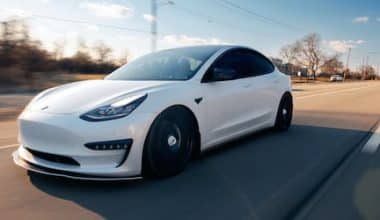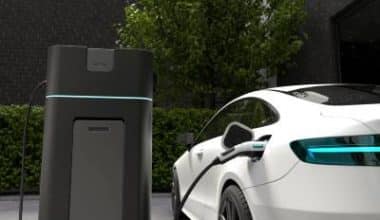Understanding the cost of gap insurance is crucial for individuals considering the acquisition of this particular form of coverage. GAP insurance provides financial protection to individuals in the event of a total loss of their vehicle, alleviating the burden of having to bear the costs associated with a car that is no longer operable. This article provides a comprehensive overview of the essential information about the purchase and cost of Medicare and state farm gap insurance.
Gap Insurance
The General Asset Protection (GAP) policy covers the difference between a vehicle’s worth and a lease or auto loan’s amount in the event of theft or irreparable damage after an accident. This advantage is not afforded by typical collision and comprehensive insurance packages, according to Bankrate. Drivers are not required to get gap coverage. Several governments require auto dealers to offer this service. GAP insurance covers the difference between a vehicle’s current value and the owner’s loan debt. Gap coverage will cover the sum that exceeds the usual insurance policy’s payment, which is based on the vehicle’s cash value if the automobile is totaled. This relieves the borrower of any financial obligation to the lender in the case of vehicle theft or total loss.
Advantages of Gap Insurance
The individuals that may derive advantages from the gap policy include:
- Individuals Who Made a Modest Initial Payment on an Automobile Loan
- Individuals who possess an automobile with a significant number of miles on its odometer Individuals who have entered into a lease agreement for a vehicle
- Owners of sports cars
- Individuals who possess auto financing arrangements that extend to encompass further products
You may get gap coverage from a number of different sources, including car lots, financial institutions like banks and credit unions, and insurance companies, to name a few.
Gap Insurance Cost
The underwriter and a number of other factors determine the cost of the gap policy After considering the model number, brand, materials, and dealership, an automobile’s price is set. Car coverage companies offer cheaper gap policies than dealerships and lenders. Lenders and dealerships typically charge $500 to $700 for gap coverage, the highest price level. As part of your loan, the principal will accrue interest. When buyers add a Gap policy to their preexisting insurance coverage, coverage companies charge $20 to $40 per year. This approach raises comprehensive and collision insurance costs by 5–6% on average. This makes it more economically viable. Solo gap insurance costs $200–$300.
Medicare Gap Insurance
Private companies offer Medigap, often known as Medicare gap insurance, to help pay for Medicare-uncovered expenses. Medigap plan expenses vary by plan. These fees may include copayments, coinsurance, deductibles, and non-Medicare services like overseas travel. Medicare Parts A and B may not cover all medical costs. Medicare gap insurance costs are designed to help pay for additional costs, depending on the coverage. The federal government requires private insurance companies to issue Medicare gap insurance that follows requirements.
The plans are denoted by alphabetical characters, such as Plans A or N. To purchase Medicare gap insurance, individuals must meet the eligibility requirement of being 65 years of age or older. To be eligible, you must be enrolled in Medicare Parts A and B, not a Medicare Advantage plan. Companies can also sell Medigap policies to Medicare participants under 65. Medicare recommends buying a Medigap policy during the 6-month open enrollment period. During this time, individuals have more options, but private insurers cannot use medical underwriting to reject insurance applications or raise Medigap prices. Preexisting medical issues may make insurance coverage more expensive or impossible after this time.
Once an individual obtains a Medigap policy, it is ensured to be renewable, irrespective of any pre-existing health conditions. Put simply, as long as the premiums are consistently paid, the insurance provider is unable to terminate the coverage.
State Farm Gap Insurance
Payoff Protector is a form of gap insurance offered by State Farm. If your vehicle is deemed a total loss, Payoff Protector serves to settle the disparity between the assessed value of your car and the outstanding balance of your loan. The provision of coverage is contingent upon the condition that the individual secures financing for their vehicle only via State Farm Gap Insurance Bank. In contrast to its competitors, State Farm gap insurance incorporates Payoff Protector as a standard feature upon loan acquisition. The insurance provider in question does not provide gap policy coverage.
However, those who choose to finance their vehicle acquisition through State Farm Bank can avail themselves of a similar function to that of gap insurance. Individuals may be eligible for this particular attribute, regardless of whether their insurance policy is obtained from a different source, as long as the loan is financed by State Farm.
Is Gap Insurance Actually Worth It?
Gap insurance may provide value for specific drivers who choose to lease or loan their vehicles. Gap insurance can be useful when the initial down payment is less than 20% of the vehicle’s value, the financing period is longer than 48 months, the interest rate is high, or the vehicle depreciates faster than average. In the event of major car damage, gap coverage would simplify loan repayments. If the potential benefits of the coverage outweigh the associated premium expenses, then the policy can be considered worthwhile.
How Is Gap Insurance Calculated?
If an individual’s vehicle is deemed a total loss and the amount owed on the loan exceeds its appraised value, gap policies serve to cover the disparity between the lowered value of the car and the outstanding loan debt. As an illustration, consider a scenario where an individual possesses a vehicle with a remaining debt of $20,000. However, the value of the asset has experienced a depreciation, resulting in a decrease of $14,000. In the event of a total loss of the vehicle, the auto insurance policy provides coverage for the pre-accident value of the automobile, in addition to the outstanding loan balance of $6,000, thereby relieving the insured individual from the burden of personally funding these expenses.
What Are The Cons Of Gap Insurance?
The coverage may not cover the balance due to limits. If the balance exceeds the limit, the person must pay. Your dealership or financial institution will add gap insurance to your monthly loan or lease payments, which may accrue interest. Finally, many traditional auto insurers cover gaps. However, eligibility conditions may include being the lawful owner of the vehicle, incorporating gap coverage when adding the new automobile to the insurance policy, or being under three years old.
What Is The Purpose Of Gap Insurance?
This optional policy helps pay off an auto loan if the insured vehicle is totaled or stolen and the debt exceeds the car’s depreciated value. Gap coverage supplements collision and comprehensive coverage. The collision or comprehensive coverage of your insurance policy would help pay for your vehicle, which has been rendered inoperable or stolen, up to its depreciated value. According to the Insurance Information Institute (III), a new car’s value drops immediately after leaving the showroom. Most cars depreciate 20% in the first year.
Does Gap Insurance Affect Credit Score?
Indeed. The contractual agreement between the borrower and the lender remains in effect even if the borrower becomes unable to operate their vehicle. If an individual ceases to make payments while awaiting the settlement of their gap coverage claim, the lender can report this occurrence to the credit agencies. Consequently, such reporting has the potential to exert a detrimental impact on the individual’s credit standing.
Why Would A Gap Claim Be Denied?
Gap insurance may seem like comprehensive car insurance, but it’s really specific. Typically, gap coverage does not cover: Repaying a car loan while unemployed If handicapped, loan repayment would be made. Minor accident reimbursement and rental car services are discussed.
- DOES STATE FARM OFFER GAP INSURANCE? All To Know
- WHERE TO BUY GAP INSURANCE: Your Ultimate Guide
- DOES PROGRESSIVE OFFER GAP INSURANCE? 2023 Guide
- HOW TO PAY OFF CREDIT CARD DEBT: EASY Methods






